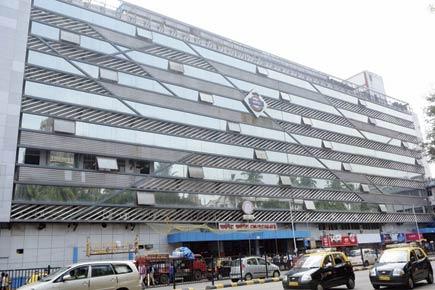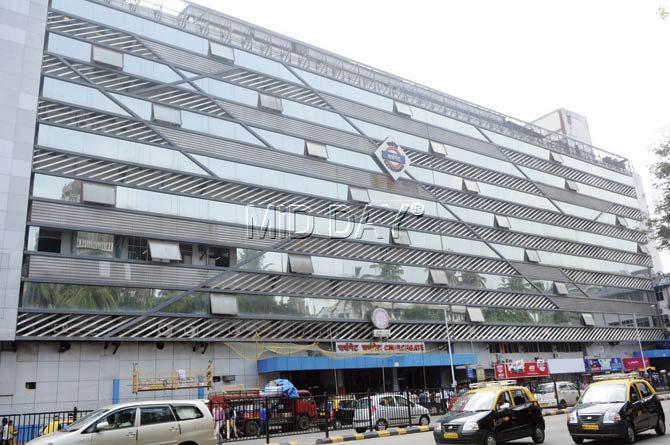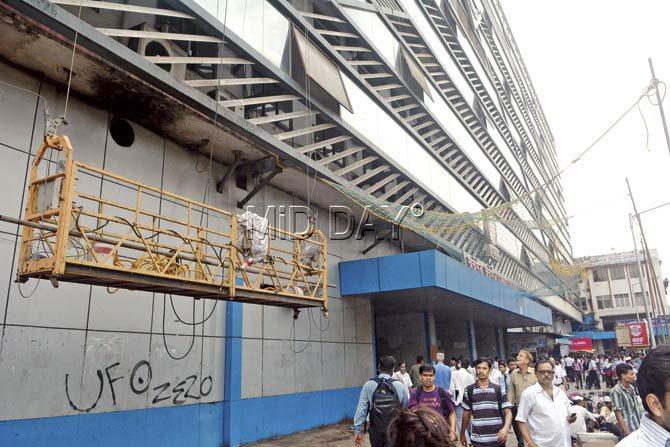Installed at a cost of Rs 4.8 crore to make the iconic Churchgate railway station building a bit swankier, the facade will now be partly dismantled for Rs 5 lakh

In a bid to make the iconic Churchgate railway station building a bit swankier, the Western Railway (WR) had covered the building with a glass facade at a whopping cost of Rs 4.8 crore, way back in 2011.
ADVERTISEMENT

The glass facade has created acute ventilation problems for Western Railway employees, as it was placed right in front of the windows. Pics/Sayed Sameer Abedi
Four years later, the authorities will be partly removing the glass panes at a cost of Rs 5 lakh, for which work will begin soon. Presently, WR has already placed protective nets on the southern end of the building, right opposite the WR headquarters, a Grade-I heritage building.

Protective nets have been thrown around the southern face of the building
There is a yellow colour crane in place, suspended with rope, which is meant to take the workers to all floors of this seven-storey building. Officials claim they have called for tenders, and a contractor would be appointed to remove the facade.
Humid house
currently 16,145 square feet of glass covers the building on all four sides of the structure. The design of the building is such that there are straight and slanted glass panes, ostensibly meant for ventilation.
However, these panels didn’t allow air to enter. This issue has been hanging fire for a few years now. mid-day was the first to report on this issue, on June 9, 2012 (‘Facing heat from employees, churchgate to lose glass facade’).
The railway employees working inside the building had told the administration that due to the facade, ventilation had become poor, and there was insufficient sunlight percolating into the structure. Sources said that around 50-60 glass panes would be removed for providing additional ventilation.
Huge blowers costing around Rs 10 lakh each will be fitted at these spaces. This facade was also supposed to assist centralised air conditioning in the building that was constructed in 1956.
Apart from the heat that was making WR employees sweat it out inside the glass house, staff were complaining that the glass facade also led to people throwing garbage out of the windows.
The Rs 4.8-crore plan included covering the building with reflective tinted glass, false ceiling with illumination for the main concourse, levelling of platforms and new roofs over the platforms.
 Subscribe today by clicking the link and stay updated with the latest news!" Click here!
Subscribe today by clicking the link and stay updated with the latest news!" Click here!






